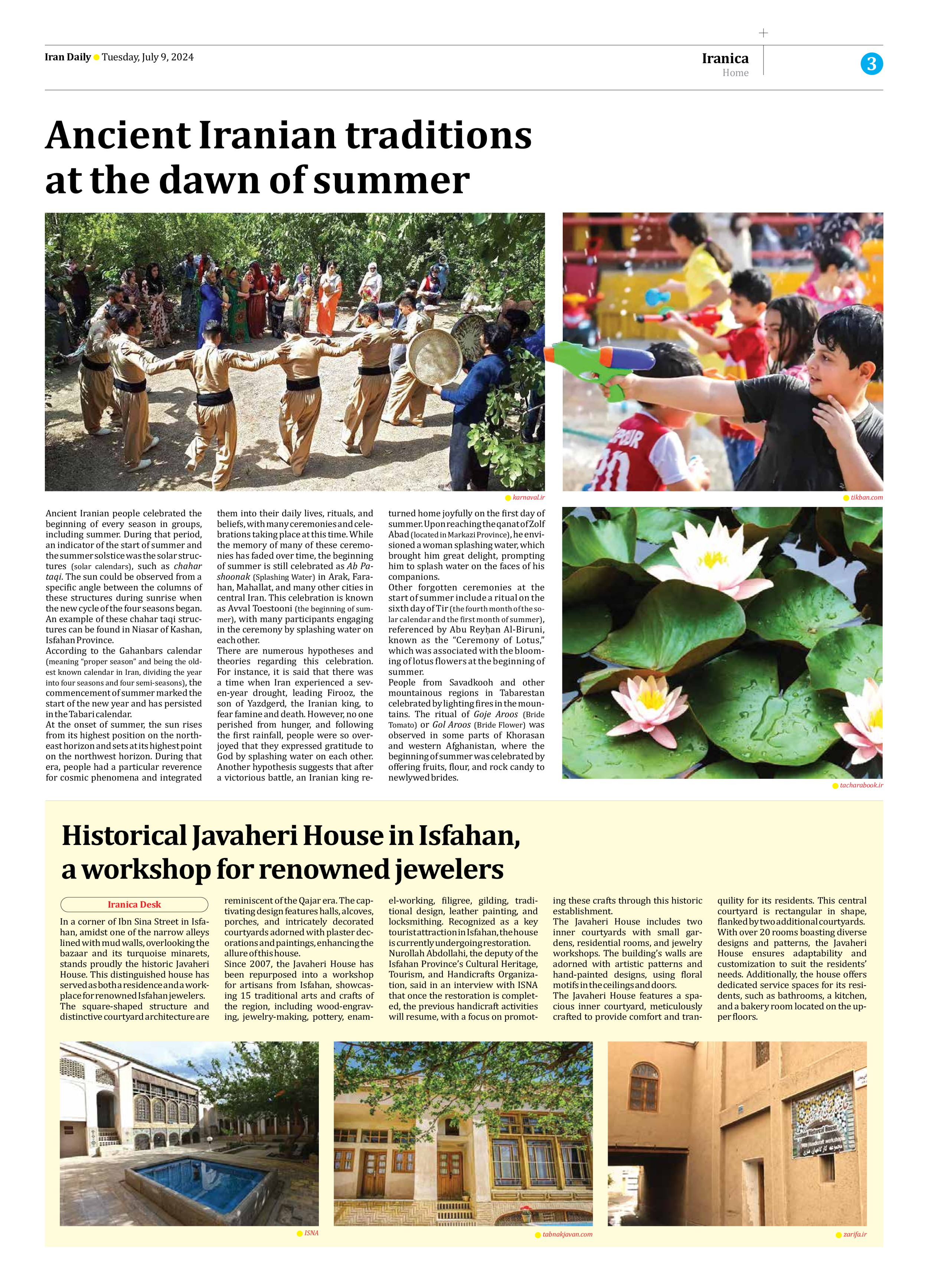
Historical Javaheri House in Isfahan, a workshop for renowned jewelers
In a corner of Ibn Sina Street in Isfahan, amidst one of the narrow alleys lined with mud walls, overlooking the bazaar and its turquoise minarets, stands proudly the historic Javaheri House. This distinguished house has served as both a residence and a workplace for renowned Isfahan jewelers.
The square-shaped structure and distinctive courtyard architecture are reminiscent of the Qajar era. The captivating design features halls, alcoves, porches, and intricately decorated courtyards adorned with plaster decorations and paintings, enhancing the allure of this house.
Since 2007, the Javaheri House has been repurposed into a workshop for artisans from Isfahan, showcasing 15 traditional arts and crafts of the region, including wood-engraving, jewelry-making, pottery, enamel-working, filigree, gilding, traditional design, leather painting, and locksmithing. Recognized as a key tourist attraction in Isfahan, the house is currently undergoing restoration.
Nurollah Abdollahi, the deputy of the Isfahan Province’s Cultural Heritage, Tourism, and Handicrafts Organization, said in an interview with ISNA that once the restoration is completed, the previous handicraft activities will resume, with a focus on promoting these crafts through this historic establishment.
The Javaheri House includes two inner courtyards with small gardens, residential rooms, and jewelry workshops. The building’s walls are adorned with artistic patterns and hand-painted designs, using floral motifs in the ceilings and doors.
The Javaheri House features a spacious inner courtyard, meticulously crafted to provide comfort and tranquility for its residents. This central courtyard is rectangular in shape, flanked by two additional courtyards.
With over 20 rooms boasting diverse designs and patterns, the Javaheri House ensures adaptability and customization to suit the residents’ needs. Additionally, the house offers dedicated service spaces for its residents, such as bathrooms, a kitchen, and a bakery room located on the upper floors.







